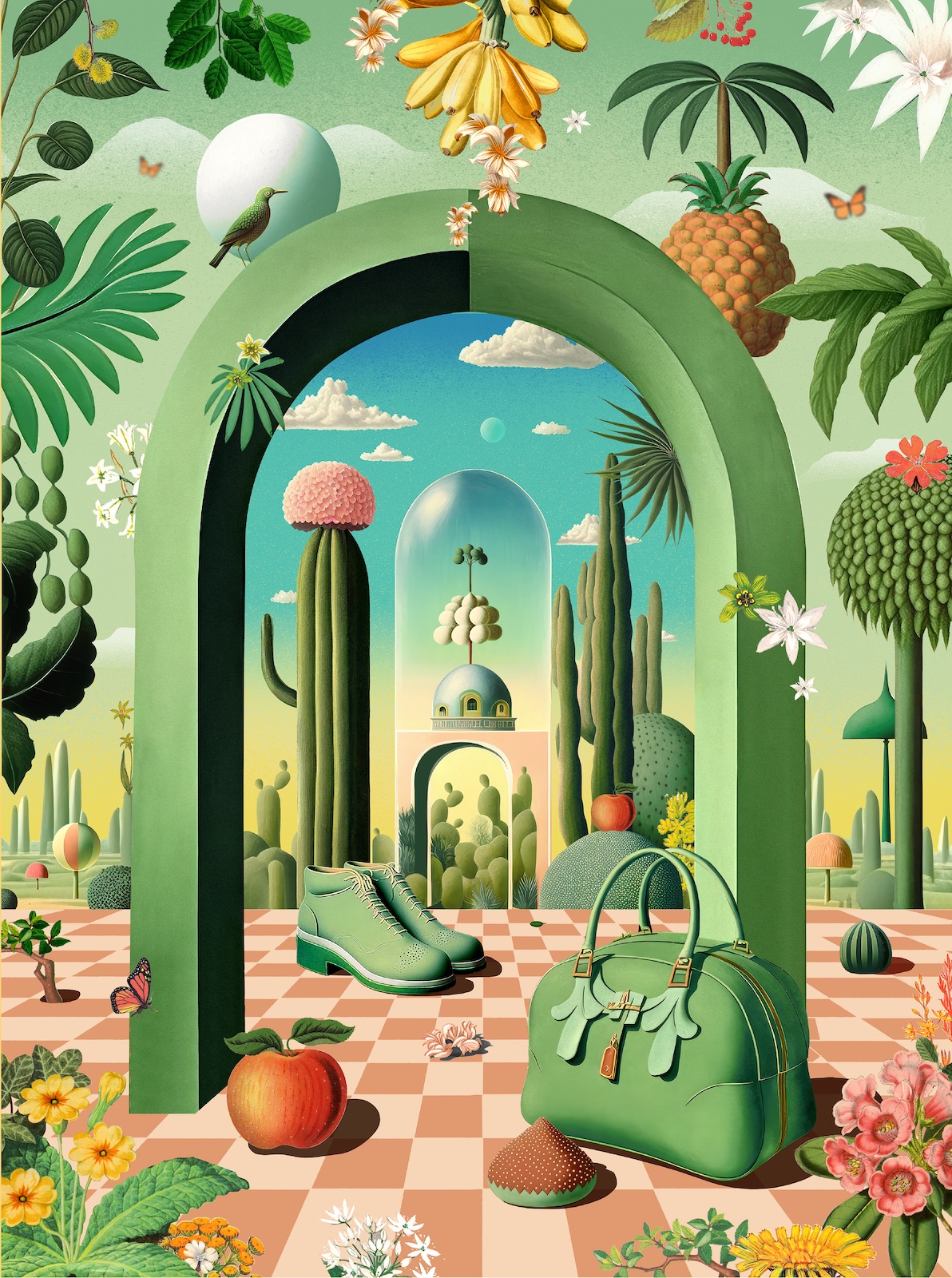“I actually used to hate mushrooms. I thought they were yucky,” Stephanie Lipp admits with a smile.
As the cofounder of MycoFutures North Atlantic, Lipp now spends her days obsessed with what she once avoided—her business is completely reliant on the root-like mycelium of fungi.
She is speaking to me online from her home in Newfoundland, where she and her partner in life and business, Leonedest Gillis, have been working for the past year and half to produce a mycelium-based leather alternative, commonly (but incorrectly) called mushroom leather. “It’s similar to growing mushrooms for food, but instead of encouraging the mushroom, or the fruiting body, to grow, we’re encouraging the root system,” Lipp explains. That root system—or mycelium network—can be grown as a sheet to a specific size, which boosts sustainability by minimizing waste. “If someone wants to make a sofa without a seam, we could do a six-foot-long piece.”
After harvesting the mycelium, Lipp puts it through what she describes as an adapted tanning process. “We need to encourage the tensile strength, to give it stretch, and to hold just the right amount of moisture so it doesn’t become brittle,” she says. “Our hard limit is there’s absolutely no fossil-fuel-derived chemicals or plastics or coatings used, and all the chemicals we’re using are natural and nontoxic.” She and Gillis recognize the environmental problems inherent in producing either traditional or synthetic leathers, and their goal is “to make sure that we do better.”
She picks up a small card case, its mottled shades of beige and brown reminiscent of a cracker, and holds it close to the camera so I can see MycoFutures’ first product prototype. The mycelium leather has been left uncoated to test how it wears. “It’s been touched by hundreds of people, and it’s held up. So that’s promising.”
Mycelium is just one of the many bio-based ingredients used to make faux leathers that are gentler on the planet than their PVC and polyurethane counterparts.
The plan is to secure enough funding to have a separate facility, one outside the family home, up and running by fall and then to ship the first 2,000 square metres by early 2025. She says she’s not intimidated by her more established mycelium leather competitors: Bolt Threads (which collaborated with Stella McCartney using its Mylo product), MycoWorks (whose Hermès prototype bag is made from Fine Mycelium), or Sqim (which worked with Balenciaga to create a coat from its Ephea fabric).
“We are definitely not the first to market, which is always good because we didn’t have to take on the burden of customer education,” she explains. “Three companies can’t cover the whole leather market themselves, but it’s proving that there’s a market for it, that there’s an appetite for venture capital investment, and that it’s feasible that brands want it, and they can sell products made from these alternative materials.”
Mycelium is just one of the many bio-based ingredients used to make faux leathers that are gentler on the planet than their PVC and polyurethane counterparts. Scientists and entrepreneurs have been experimenting with a veritable smorgasbord of waste ingredients, byproducts of the food industry: corn, bananas, apples, grapes, pineapples, sugar cane, cereals, and coffee grounds. Names such as Piñatex (pineapple leather), Frumat (apple), and Bananatex (banana) are popping up in fashion collections.
Other synthetic leathers are crafted from eco-friendly materials such as eucalyptus, cork, and cactus. The Indian startup Phool collects waste flowers from temples and turns them into Fleather, a leather alternative that feels like lambskin. Venturing further to find sustainable raw materials, Vancouver company Obakki is working with women in Uganda to collect elephant dung and transform it into paper for disposable shopping bags.
Most people don’t realize that in addition to ethical questions around using animals for their skins, traditional leathers are treated with toxic substances during the tanning process. Many leather workers use chromium, formaldehyde, and arsenic daily, and tannery effluent from factories can harm people and animals in surrounding areas.
As more companies like MycoFutures research and develop alternative leathers in the coming years, the twin obstacles of affordability and scarcity should diminish.
Scarcity is a problem Adrián López Velarde knows well. When he and his business partner, Marte Cázarez, introduced their Desserto cactus leather to the world in 2019, the response was overwhelming. “The emails were flowing in, and people were asking for samples,” Velarde recalls. “We just had a few metres, and so we had to cut little samples and put them in envelopes for customers.”
He’s speaking to me from Milan, where he’s opening his first overseas office. The Mexican company has come a long way since its initial samples, which were so disappointing that the R&D engineers advised him and his partner to stop wasting their money and give up. After much trial and error, along with multiple loans from family, Desserto now makes durable cactus leather with the look, weight, and hand-feel of animal leather.
And it’s about as eco-friendly as it gets. “Cacti grow in semiarid conditions, in places where you don’t have a lot of water, and where soil is very poor,” Velarde notes. “You don’t need to apply agrochemicals for it to grow as long as you plant it in its endemic region.” Plus, cacti grow quickly and improve soil quality. “We leave behind soil that is rich and can be used for other purposes, like growing alfalfa or fruits or vegetables.”
Since its launch four years ago, Desserto has collaborated with global fashion labels including Adidas, Givenchy, Fossil, and Karl Lagerfeld, along with automotive heavyweights BMW and Mercedes-Benz. With this success comes pressure: the challenge of cactus leather, as with all plant-based leathers, is balancing sustainability with durability.
“You want to make a material as organic as possible, but you also need to make it last,” Velarde explains. “You don’t want your handbag to biodegrade after a day of using it.”
Read more from our Spring 2023 issue.









